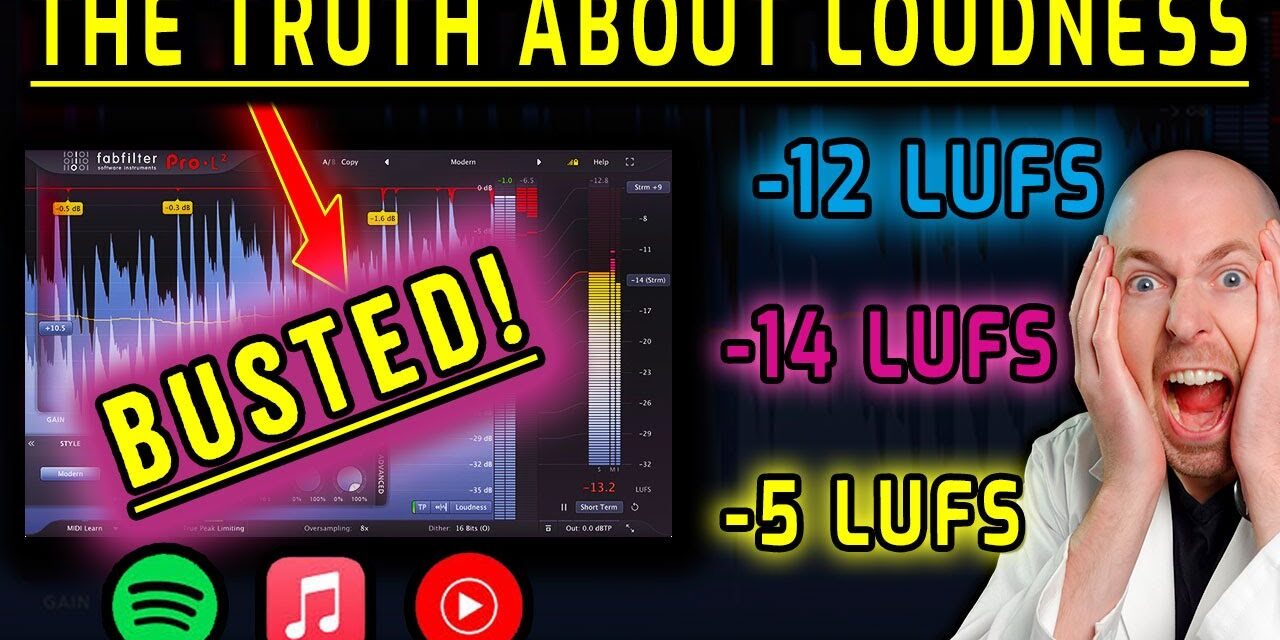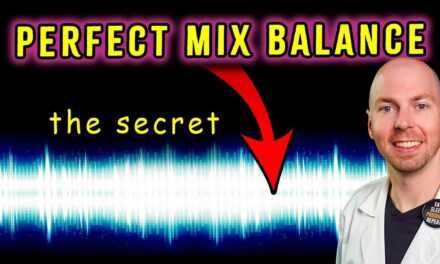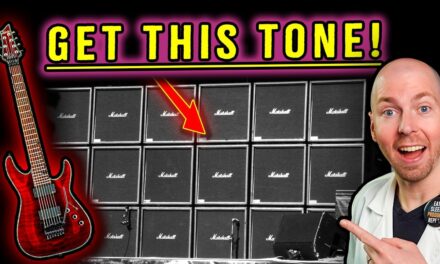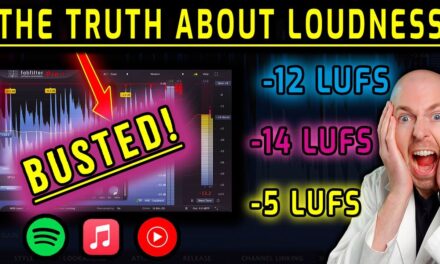
Mastering Music for Distribution: Understanding Loudness, Bit Depth, and Output Levels

Mastering Music for Distribution: Understanding Loudness, Bit Depth, and Output Levels
At the end of the blog article is a video so you can HEAR the differences and decide for yourself!
Also, grab my FREE Compressor 101 eBook to help you hear and dial in perfect compression for LOUD masters: bit.ly/compressi…
Introduction
Learn EVERYTHING you need to know about song loudness so you can maximize the quality of your songs before sending off for distribution to streaming services. There is SO much debate and misinformation on this topic so listen up and learn the best approach to make sure your music always sounds as good as it can.
From my experience, the answer almost always depends on sonic quality and doing what is best for the song – not trying to hit a target loudness regardless if the streaming platforms request one!
Why Loudness Matters
Consider Love in War by Once Around, mastered at -5 LUFS—much louder than streaming standards. So why aim for such high levels?
Loudness matters because standards evolve, but great sound endures. Rock, metal, and EDM often demand higher levels, provided the mix remains clear and punchy. Many songs actually sound the BEST when they are LOUD as it brings up all the details and helps glue the mix together. A well-arranged track maintains its integrity even at high volumes, ensuring a compelling listening experience.
Setting Output Levels
For CDs, -0.2 dBFS full scale is ideal. I avoid true peak limiting since I’ve never personally been able to hear intersample peaks causing an issue with CD players. To double check yourself, render at 16-bit (the REQUIRED bit depth for CDs) and listen—if there’s no distortion, it’s fine.
Digital Distribution (Streaming Services)
Streaming platforms have different file requirements—some accept 16-bit, others 24-bit. When submitting tracks, convert them to lower quality MP3s and listen for artifacts. Focus on the transients and punch or impact of the song (usually drums are great to focus on). If crunchy/buzzy distortion is heard on the transients, lower the output ceiling to around -1 dbFS to accommodate the intersample peaks and transcoding artifacts.
The Debate on True Peak Limiting
Tests comparing -0.2 dB and -1 dB full scale showed intersample peaks still occurred in lower-bitrate MP3s (128 kbps), but were stopped at higher quality MP3 lettings (320 kbps). The question becomes if you should you sacrifice loudness to accommodate lower-quality streams? From my testing, there is minimal audible difference so keep it LOUD.
Lossy Encoding Artifacts
Analyzing MP3 compression with Sonnox Pro Codec revealed that lossy streaming formats all have similar artifacts:
- White noise effects in high frequencies which clouds the sonic image slightly
- Artifacts are very audible at lower bitrates (but this is determined by the streaming provider and not something YOU should be too concerned with)
- Minimal difference in the artifacts generated between loud (clipped and highly limited) and dynamic masters after encoding for MP3s.
This means lowering loudness doesn’t necessarily improve encoded sound quality! Trust your ears to decide how much limiting to use and don’t try to hit a loudness target.
Analyzing Transcoding Artifacts
One of the most debated topics in mastering is whether a loud or quiet master affects the level of artifacts introduced during the transcoding process. By isolating the artifacts and analyzing their impact, we find that the difference in artifacts between a quiet and loud master is negligible. This means that simply making a master quieter does not provide an inherent advantage in reducing distortion or artifacts when the track is transcoded by a streaming platform.
The Impact of Loudness Normalization
In practical applications, streaming services will adjust the volume of a loud mix to meet their target loudness levels. When a loud master is turned down, the level of artifacts also decreases accordingly. From a perceptual standpoint, the difference in distortion between a loud and quiet master is not significantly noticeable. This debunks the common claim that louder masters introduce substantially more artifacts when transcoded.
How to Optimize Your Master for Streaming
Understanding that streaming platforms normalize playback levels means that focusing on optimizing loudness without destroying transients is key. If a track sounds good at a higher volume, then that should be the primary goal. Some distributors recommend a master format of 24-bit with a -1 dB true peak headroom, but this is merely a guideline. By keeping the master at -0.2 dB full scale, artists can maximize loudness while being mindful of potential distortion introduced by lossy encoding.
To ensure minimal risk of unwanted clipping, setting a limiter ceiling at -1 dB and utilizing true peak limiting can be a safe approach. However, there are no absolute rules—mastering should always be done using critical listening rather than adhering to arbitrary loudness targets.
The Importance of Using Your Ears
Rather than focusing on matching the loudness standards of a specific streaming service, the best approach is to optimize your track’s loudness potential while preserving dynamics. Avoid compromising your master just to meet one platform’s recommendation, as different services normalize audio differently. At the end of the day, the normalization process is out of your control, so it’s best to deliver a master that sounds the best to your ears.
Key Takeaways
- Loudness normalization lowers artifacts proportionally.
- A well-mastered loud track often sounds better than a quiet one.
- Streaming platforms set their own levels—focus on optimizing your song’s potential.
- Don’t sacrifice transients unnecessarily—use your ears.
- If in doubt, set the limiter to -1 dB for extra safety to minimize any possible distortion from intersample peaks (even though I don’t think I’ve ever heard them in any of my playback systems).
Final Thoughts
Mastering is about making your track sound its best, not just following guidelines. Optimize your mix, ensure clarity, and trust your ears.
To hear the actual artifacts discussed in this blog, see video below! Timestamps provided for convenience.
⌚TIMESTAMPS⌚
00:00 – Debunking the Loudness War
00:23 – Grab my FREE Compression 101 eBook!
00:42 – The Mastered Song
01:14 – Why do I ignore the distribution guidance?
03:15 – Importance (or maybe not) of final output level…
03:38 – How to hear intersample peaks for CD masters
04:25 – What output level for digital distribution?
05:21 – What to do if you notice intersample peaks
05:44 – Can you ACTUALLY Hear Different Encoding Artifacts?
07:14 – Converting wav to 320 kbps MP3 artifacts
07:52 – Converting wav to streamable 128 kbps MP3
08:22 – Converting wav to MP3 with lower output level
09:23 – Artifacts after converting -1 db and -0.2 db wav files
10:06 – Testing Impact of True Peak Limiting on Inter Sample Peaks
11:57 – Listening to null tests to hear sonic differences of ISPs
12:07 – Listening to just MP3 compression artifacts
13:21 – Is there benefit to adding additional headroom?
13:48 – Do dynamic mixes reduce streaming artifacts?
14:43 – Comparing transcoding artifacts of loud vs dynamic masters
16:35 – Effect of turning down a loud master
18:15 – Streaming loudness targets is just a suggestion
19:16 – Some Key Takeaways
20:04 – Don’t forget your FREE Gift!
Like this video?
👇👇👇
👉 FREE Compressor 101 eBook: bit.ly/compressi…
💥PLUGINS💥
🔗 Sonnox – Pro Codec: bit.ly/3rj1WX6
🔗 FabFilter – Pro L2: bit.ly/4eSb4bR
💥COURSES💥
👨🔬Complete Home Studio Mastering Course (Rock & Metal)
💰10% OFF: bit.ly/3q5HGZr
🎸SUPPORT THE BAND🎸
🎶 Song: Love and War by Once Around
🔊Spotify: open.spotify.com…
🔗IG: oncearoundband
🌎Web: OnceAroundIdols….
💥LET’S WORK TOGETHER💥
Get a customized mixing and mastering package for your music!
🔊 bit.ly/2y1T78h
💥MY GEAR💥
🔊Studio Monitors – Genelec 8030c: bit.ly/3ehDq2N
📷Sony ZV-1 Camera: amzn.to/3rqG2ma
🎙Shure Beta 57 Microphone (Video): amzn.to/3prXseo
🗜Boom Stand for Mic: amzn.to/2YYjn0O
💡Ring Light: amzn.to/2Yj6qzB
💥SOCIAL💥
📹 Twitch (Watch LIVE!): twitch.tv/raytow…
🔗 Facebook: facebook.com/ray…
📷 Instagram: instagram.com/ra…
💥CONNECT💥
👋 Private FB Community: bit.ly/hsftgroup
⭐ Blog: www.raytownprodu…
📧 E-mail: bobby@raytownpro…
💙 Website: www.raytownprodu…
Please help support this channel! Some of the links are affiliate links which doesn’t cost you anything extra. At the same time, I also receive a small tip from each sale (basically like buying me a cup of coffee ☕ for helping you out with these high-quality videos).
It’s a win win, and I very much appreciate it 😀


















![[Start to Finish] How to Mix Pop/Reggae with Female Vocals Step-By-Step](/blog/s/img/wp-content/uploads/2019/11/Start-To-Finish-440x264.png)

